#Greg Keyes
Explore tagged Tumblr posts
Text


“Your mother?” he said. “Wait, you’re second-generation Monarch?” “Third,” she corrected. “It runs in the family.” Smiling, she showed Mark a photo of her family, including her – and what must be her twin sister, and her own identical twin girls, who looked to be about three. It was more than a little weird. “That’s incredible,” Mark said. “Don’t suppose your family has any tips on slaying dragons?” “Slaying dragons is a western concept,” she answered. “In the East, they are sacred. Divine creatures that brought wisdom, strength –even redemption.”


"Mark turned that over in his mind. Was that where Serizawa was coming from, ultimately? The idea that these monsters were divine? Gods? From what he remembered of mythology, divine didn’t necessarily mean good or even nice. The gods could be angry, jealous, petty, spiteful. But something about the way Chen explained it touched a chord in him. Redemption. He could use some of that."
#movieedit#filmedit#godzillaedit#monsterverse#godzilla king of the monsters#godzilla#ilene chen#mark russell#king of the monsters#kyle chandler#zhang ziyi#[greatrunners graphics]#greg keyes#books#shobijin#mothra
15 notes
·
View notes
Text
Road To The Kingdom - Firestorm Tie-In Novel
Dawn of the Planet of the Apes: Firestorm is a prequel novel written by Greg Keyes for the second movie in the reboot trilogy. It takes place soon after the end of the first film, about a week after the apes escaped into the redwood forest beyond San Francisco and the Simian Flu began to cut through the human race. This novel is a fantastic bridge between Rise and Dawn, giving us more insight into characters we met in the first movie who will feature in the next, as well as fleshing out the fall of society.
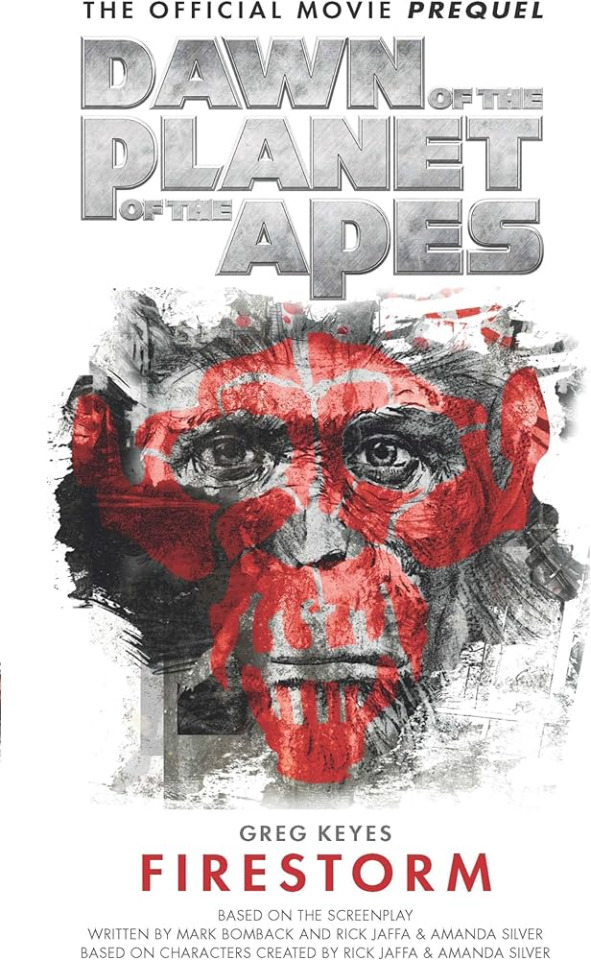
The book does very well juggling between the two massive plots of Caesar's apes avoiding their human hunters and the Simian Flu tearing through the city. Though we don't see Will or any other humans we met in Rise, they give us many new human characters: a reporter trying to make the connection between the escaped apes and the new virus, an emergency room doctor dealing hands on with outbreak casualties, and an ape researcher and a former hunter who have been brought in by Gen-Sys to capture Caesar's group. While I thought I wouldn't care about the humans because the apes are always my favorite characters, all these humans in different locations and with different stories keep the story from dragging; I ended up enjoying the final days of humanity almost as much as Caesar's story. The book also gives us the first introduction to a human character who will become important in Dawn: Dreyfus, the leader of the human colony played by Gary Oldman. Going into the movie, his backstory isn't very clear other than he was in some position of power before the end and he lost his wife and children. But the book goes really deep into his story of a former police chief running for mayor and wanting to protect humans. Rereading the book in 2024, the parallels of the Simian Flu with the Covid outbreak definitely rings true (much like the YouTube shorts).
But no matter how good the human characters are, what I enjoyed most about this book was seeing Caesar and his escaped apes start to adapt to life in the wild. Even while they're being hounded by the humans chasing them, they have to figure out how to care for sick/injured apes and where to get food without humans to feed them. A great moment for Caesar is when he thinks to himself that he never thought beyond escaping from the human city; his realization that there is more to figure out than just dodging humans shows how he goes from the accidental ringleader of the sanctuary to the wise authoritative leader of the apes of the next two films.
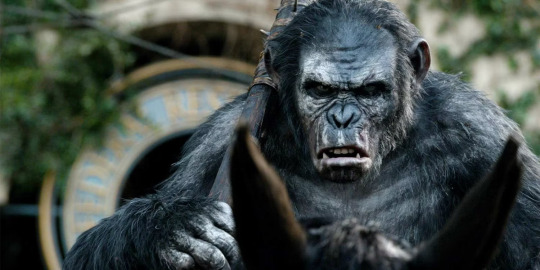
Though surprisingly, the true star of this book isn't Caesar; it's Koba. We get numerous detailed flashbacks of Koba's life before ending up in the Gen-Sys lab and receiving the brain enhancing drugs. From the death of his mother to being an abused TV star to arriving at the labs as a test ape. In the films, Koba's hatred of humans shines through and is unquestionable; you don't need the backstory to understand why he carries a grudge against all humanity. But reading the details really did break my heart. And getting his backstory revealed as he learns to work with other apes, as he proves his loyalty to Caesar by rescuing injured apes rather than wrecking vengeance on humans, you actually have hope that he could be happy now that he was free with other apes.
Another great part of the book is getting to see the very beginning of Caesar and Cornelia's courtship. Since one of my disappointments with the films are the forgotten female characters, I was glad to see Cornelia here, challenging Caesar's orders when it came to taking care of injured apes. Though her role is still small, I liked seeing her get a little time to flesh out her character.
Firestorm is officially labeled as a prequel (which is why I have it listed first as I'm trying to go in chronological storyline order), but I actually enjoyed reading it after seeing Dawn. While I think it can still be appreciated in any order, I liked getting to meet Koba in the movie and seeing him as a great complicated villain, before then learning his backstory and growing your sympathy for him, while also thinking about how tragic it is that he couldn't let go of his hate. Whatever order you decide to read them in, Firestorm by Greg Keyes is a wonderful expansion on the movies that I would label as required reading for fans for the expansive and enjoyable story it shares.
Intro / Previous / Next
#dawn of the planet of the apes#rise of the planet of the apes#planet of the apes#war of the planet of the apes#war for the planet of the apes#kingdom of the planet of the apes#reboot pota#pota#firestorm#caesar#koba#prequel#greg keyes#andy serkis#mine#chimpanzee#chimp#book
84 notes
·
View notes
Text
youtube
I'm very pleased to share the final episode of the documentary series I've made on the NJO, Crafting An Epic: The Making of the New Jedi Order. This final episode, Part VII: Unification, takes us through the conclusion to this amazing series with insights and commentary from Greg Keyes and James Luceno on The Final Prophecy and The Unifying Force, talking deeply about Yuuzhan Vong society as well other elements of the series, such as Jacen's enlightenment and setting possibly the capstone for the Star Wars universe. Following that is a section of NJO reflections by those who made the series, as well as neat archival polls taken of the fandom (over 1000 participants) of their favorite characters, books, scenes, and so on, from 2005. It was a lot of work to make this series but a joy to see it come to fruition and share it. Enjoy!
#star wars eu#star wars expanded universe#sw legends#star wars legends#star wars#new jedi order#njo#luke skywalker#jacen solo#jaina solo#star wars documentary#lucasfilm#del rey#james luceno#greg keyes#the final prophecy#the unifying force#yuuzhan vong#Youtube#crafting an epic#new jedi order documentary
5 notes
·
View notes
Text
Novel Snow
Up here in the Great White North, we finally got some snow last month, which is probably a good thing (moisture to help ameliorate next year's forest fire season, hopefully, and increase the Earth's albedo), though it can also be inconveniently cold. Meanwhile, I read some books last month and I'm going to tell you about them.
Possible spoilers below for Jack L. Chalker's Dancing Gods series, Gerald Brandt's San Angeles series, and Lois McMaster Bujold's Penric series. (I generally try not to spoil the actual book I'm talking about, but no promises for earlier books in the same series.)
Jack L. Chalker: Demons of The Dancing Gods, completed November 3
Continuing with my "Dancing Gods" series reread. The first book, The River of Dancing Gods, was named after an actual hydrographic feature in the book's fantasy world, though it wasn't super-relevant to the plot. And also, there was no mention of what dancing gods the name of the river might even be referring to. I guess it's possible I'll find some reference to them that I'm forgetting about, but at the moment it seems like it's just being used as a repeated title element to indicate the books are in the same series…which means it might have been done strictly for humorous purposes as a fantasy pastiche. But it does indicate that maybe there might be demons in this book.
For reasons that I can't quite recall right now, the back cover of my copy of this book is extremely tattered. It looks like it may have been chewed on by some kind of animal, perhaps? (I may have to include an actual picture of it to do it justice.) I can't even recall if it was like this when I bought it (doubtless second-hand, but even then, I don't think most stores would stock it like that), or what animal might have chewed on it if it happened after I bought it. Anyway, it makes it low-key a bit annoying to read, like any cover abnormalities do.
The best thing I have to say about this book is that it introduces the one element that I remembered about the series even years later. One of the characters (Joe the former trucker, a.k.a. barbarian warrior Joseph the Golden) gets bitten by a pekingese dog and discovers that he has been inflicted with the curse of the were. He is not a were-pekingese, though--he is just a "were". Which means that every night of the full moon, when the sun goes down he turns into…whatever animal he is closest to. An identical copy of that animal. And that includes humans (and, in the context of the world, fairies, too). I don't know if this concept was ever used anywhere else, or if it's unique to Chalker, but it's pretty interesting. And of course they use it several times in the plot, and while at least once they completely forget about the effect until it happens, overall it's portrayed mostly as a boon.
The book as a whole, though, does not hold up. It takes forever for things to get moving, and it's just like…go here, and have an incident on the way. Then have some boring description and local colour, and some half-assed satirical references. Marge becomes more fully a fairy (a made-up kind of sex fairy, to be specific) and alternates between angsting about it and losing her entire personality for a stretch of time. The "were" thing happens randomly in the middle of a wizard's convention (and said convention doesn't even get used for any proper convention jokes--where's the funny panel concepts?) and seems entirely serendipitous/gratuitous. A new female character is mentioned and gets a backstory but barely any personality. The main bad guy turns out to be supposedly motivated by trying to improve the world, by bringing over innovations from our world, and is defeated in a magical duel by the living manifestations of the bad things about modern society. The underlying worldview of the book seems to be pretty fatalistic; bad things will always exist, corruption is the same everywhere, everybody will do bad things if they get into power, etc. And by and large, the plot feels…perfunctory. The whole book feels perfunctory. And are there more demons than the first book? Not so's you'd notice.
So that's two strikes against keeping it--bad physical condition, and underwhelming contents. But there's still three more books in the series, which I am not 100% committed to finishing, but I guess I'll try. If there isn't improvement in later books, though, odds are the whole thing will get weeded. (And the ragged Demons copy will get thrown out.)
James Clemens: Wit'ch Fire, completed November 8
This is the next random new author trying, male edition (i.e. the book I was technically supposed to be reading last month instead of The Art of Prophecy). Definitely picked this one up second-hand, it still had the sticker on the cover, and I knew little or nothing about it. The reason it bubbled up to the top of the list is because I saw the cover somewhere, probably in one of those "have you read this book" poll accounts.
If I had a nickel for every book I read this year with an in-universe (Watsonian?) introduction talking about the book, this would be getting me my third nickel. First one was You Feel It Just Below The Ribs, the "Within The Wires" podcast tie-in book; second was the Jenn Lyons The Ruin of Kings. This one is warning its readers about how dangerous this book is (because its author lied, of course), and that the only reason that they get to read it is because they're taking a course about it, as part of an attempt to demystify this long-banned book by trying to associate it with boring academia. Unlike the other two, it doesn't actually contain footnotes and commentary throughout or not, so I'm not sure what the point of it is.
So the original book comes from 200-300 years before the introduction, and what does it do right away? Include an except from even farther back, like 500 years or so, as a prologue. What's most jarring to me about that, though, is that this 750-year-old ancient text is…written in modern prose in what looks like standard close third-person. In our modern, non-fantasy world, you go back that far and, well, you get (for instance) Middle English, and I'd be surprised if you got any prose in modern style. Ancient text should be in, like, KJV biblical style or something. Epic poetry. And the thing that it reminds me of most is the horrible prologue to an otherwise amazing book, Guy Gavriel Kay's Tigana, as you have a dialogue between two people on the eve of a momentous battle. Luckily it manages to get better than that and things actually happen.
Then we get to see the young wit'ch girl herself…okay, I have to say something here about apostrophes. This book is bad for apostrophes. I mean, "wit'ch" is bad enough, but it could just be one thing. But no. We have og'res. We have elv'in. We have moon'falcons and rock'goblins. Not to mention people with apostrophes in their names--not everybody but enough. It seems to me that there are are basically two valid reasons to have an apostrophe in something. (Well, three, but the English possessive "'s" suffix is strictly limited.) Either you've omitted some letters and the apostrophe is showing that, or it's an actual phonetic symbol. Like in the Hawaiian "a'a", it's a glottal stop sound, and it's used that way in a number of languages. (And in "Hawai'i" itself, properly. And yes, technically in Hawaiian it's not an apostrophe, but close enough.) In the Russian transliteration into the Roman alphabet, it's more like the "y" sound of palatalization, like in the Ob' river. And apparently it's used in some transliterations to show that adjacent letters are in different syllables or different morphemes (like we do with dieresis sometimes in words like coöperation).
In fantasy worlds, apostrophes have a long history as well. Tolkien didn't use many, I don't believe, but Robert Jordan certainly had a few. (Mostly these are in the Old Tongue so we can conjecture that sometimes it's phonetic and sometimes it's morphological.) Pern (yes, not really fantasy, but sort of) used them explicitly for the "omitted letters" purpose in the dragonriders' names. But in Wit'ch Fire they have yet to have any purpose that I can see except for annoying some readers.
Anyway. The book does do a good job of bringing in additional characters, even if things do get fragmented in the second half as we switch POV between different characters encountering other sets of characters. When the new characters are introduced, the POV characters at least, we get a sense of their own personal concerns and some inkling as to why the series is called "The Banned And The Banished", as everyone seems to be an outcast of some sort or another. They are even somewhat organically brought together, with reasons for staying together that make sense for each character, though it takes a long time before all the threads meet up, and what you might think is just a brief stopover as the characters flee to safety turns out to be a morass that takes up the whole rest of the book. (And apparently we did need the close third-person flashback after all; it's just not believable as a historical chronicle.)
In the end I was happy with the book and will try to hunt down more in the series, and brace myself for more exceedingly gratuitous apostrophes.
Gerald Brandt: The Operative, completed November 12
I read the first issue of "Ghost Rider 2099" in my latest Marvel Unlimited run, and in an interesting departure from the usual "possessed by the vengeance demon Zarathos" or whatever of previous Ghost Riders, it turned into "what if Neuromancer created a skeletable robot body for Count Zero after he died while jacked in". Like somebody had eaten too much William Gibson and then threw up all over their comic script. Characters named Case and Jeter. Anyway. For some reason it made me want to read something vaguely cyberpunk. And since I do have a reread of the Cyberpunk Trilogy scheduled (sometime after the Dancing Gods series, so it'll still be a while), it seemed like a good time to slot one in.
I do actually have William Gibson's The Peripheral on my shelf, after I bounced off the Amazon Prime series, but I wanted something a little zippier, so I went with the next book in Gerald Brandt's San Angeles series. Gerald Brandt is another one of those authors that I actually met at conventions before he was published, and it's even possible he may recognize my name and/or be able to pick me out of a lineup.
The San Angeles books are a dystopian series centered mostly around the titular megalopolis, a gigantic seven-layered paved-over city that sprawls down most of the California cost (San Francisco to Los Angeles, see). It's the early 22nd century, the world has mostly gone to hell, corporations run everything, fresh water is scarce, and rich people hide out in the top levels of the cities (where only they get to see the sun) or up in the satellite stations. The first book, The Courier, is about a motorcycle courier named Kris who gets entangled in intercorporate shenanigans and eventually recruited by love interest Ian Miller into an organization called ACE that is notionally trying to keep corporations in line. So it's really more ride-around-on-a-motorcycle than hack-into-cyberspace, but it still feels cyberpunk-adjacent.
In this book, Kris is being trained as an operative for ACE, but her training is cut short and she finds herself back in San Angeles, finding out everything she thought she knew was a lie, and in particular that ACE is not as free of corporate entanglements as she thought. She's got a little PTSD after the last book, and she picks up a friend who has even more, and there's also a big tech secret that the corporations want and we don't want them to get. This is one of those books with one first person narrator (Kris) and several third-person narrators, which is not a pattern I like, but I'm mostly inured to it now.
It starts out in a hopeful place, but things go downhill. Our characters seem to have too little power, and struggle to get anything accomplished against forces arrayed against them (on both sides). Their triumphs are too few and too small, and that makes this a fairly depressing book. The third book, The Rebel, sounds like we'll be getting to the "tear it all down" rebellion stage of the dystopia, but at this point I don't have a lot of confidence it will actually fix anything. (Which may be the point, but it's a depressing one if so.)
Lois McMaster Bujold: Demon Daughter, completed November 14
I have of course read a lot of Lois McMaster Bujold (and recently), but that's all her SF stuff. (Yes, I believe that all of her SF is Vorkosigan-saga-related.) But at some point she got into writing some fantasy, too; first her standalone The Spirit Ring, and then The Curse of Chalion and a couple of novels in what she calls the "World of The Five Gods", and then the Sharing Knife series. And then she started the Penric series.
The Penric series consists mostly of novellas and novelettes (with one novel-length work), set in the world of the Five Gods, following the titular Penric's life and career. Like the Vorkosigan series, they have sometimes been published out of chronological order. They've also mostly been self-published direct on Kindle, with sometimes only a matter of days between the the story being announced and being published. Bujold is mostly retired at this point, so this is really her retirement project. (This is also the same timeframe in which she wrote "The Flowers of Vashnoi", and also a novella in the Sharing Knife world, "Knife Children".)
The World of the Five Gods…well, there's five gods. Kind of like the seven gods in the Song of Ice And Fire series, really; there's the Mother and the Father, the Son and the Daughter, and then there's the Bastard. This was mostly introduced in The Curse of Chalion and the other novels (Paladin of Souls and The Hallowed Hunt, for completeness), but frankly I mostly just remember the parts referenced in the Penric stories because it's been a while since I read the other ones.
So basically: demons exist. They may start out as "elementals", minor spirits who usually find some small (vertebrate) animal to dwell in, and they tend to produce chaos (in a Second Law of Thermodynamics sense, mostly). When the animal dies, they jump to another animal, usually a more powerful one because they are more powerful themselves. At some point they become a "demon" rather than an elemental. At some point a demon may jump into a human body, and if it takes control of the human, then it starts wreaking havoc. But if the human can take control of it, then they are now a sorcerer and can use the demon's powers for their own. Demons fall under the purview of the Bastard, and many servants of the Bastard's Order have demons under their control. (And the Bastard can destroy demons as well, mostly through his Saints, humans that they have blessed.) Now I've forgotten now how much of this is universal and how much of it just applies to the Bastard, so read the Chalion books to find out more.
Anyway…in the first story, "Penric's Demon", Penric is a minor noble who stops to help an injured scholar of the Bastard's Order, but she dies…and then her demon jumps into him. They come to terms with each other, and he helps her (the demon, who he dubs Desdemona at some point, has dwelt in mostly female hosts over the two centuries of its existence) and she helps him. Penric ends up joining the Bastard's Order. He has other adventures, meeting druids (who can do some other type of magic involving animals and blood), going on a mission, falling in love and getting married, and learning about how to use "uphill" magic (anti-entropic, which involves a greater increase of entropy somewhere else) to do healing and other useful tasks. As the series goes on, the stories have become more…"cozy", perhaps? I fell behind a bit because the plague story "The Physicians of Vilnoc" came out in 2020, just before the pandemic, and so I avoided it for a while. Luckily (?), there weren't any new stories for a couple of years, so I'm only currently behind by the two that came out this year, of which "Demon Daughter" is the first.
The basic premise of the story is that a young girl ends up in possession of a fairly new elemental, and Penric ends up having to teach her how to control it. And then presumably a decision is doing to be made about whether she keeps her demon or it gets destroyed by a Saint. (I'm betting on the former, myself, but I guess we'll see.) Penric does pick up a few strays throughout the series, though not all of them end up in his household.
Jack L. Chalker: Vengeance of The Dancing Gods, completed November 18
I was a little bit confused about what the next book was; I picked up Horrors of The Dancing Gods first, but then realized that it must come later because we'd moved on to one character's offspring, so I checked the dates and then picked the right one. It turns out Goodreads was also confused about this book, because it didn't show up when I did a search for "Dancing Gods"; in fact, somebody had screwed up and made Vengeance another "edition" of Demons, so it claimed I had just read this one a couple of weeks ago. So I put a note in with the Librarians Group to get that fixed, and in the meantime I pretended to be reading an omnibus of the book and the next one.
I am definitely feeling like I am not going to be keeping this series. They continue to be kind of meh, by-the-numbers, and not even up to Chalker standards. It's like he felt that because this is supposed to be a fantasy pastiche, he didn't have to take it seriously. That might work better if the book was particularly funny…but it generally isn't. There were two parts that were amusing (though not laugh-out-loud funny): the bizarre fantasy soap opera performance at the beginning of Chapter 2, and the bit where the always-has-to-talk-in-rhyme Oracle character has to keep around a guy named Porange Chilver in case he accidentally ends a line with "orange" or "silver". But the whole Oracle side-trip, which includes a body-swap where one of the main characters literally loses their entire personality, is then fixed with magic and barely impacts the story (well, except that one character is now a mermaid). I expect more lingering personality changes and body horror from my Chalker, thank you very much.
They also end up having to return to Earth, where our bad guy has set up a megachurch, and…well, I guess let's say that this book was written and published during the Reagan years, which in hindsight was basically the prequel to the Trump era, so Chalker was feeling a little bitter and cynical about people at the time. He asserts that everything was getting worse, that the world was on the edge of nuclear apocalypse, and that people in general were just stupid. And in the aftermath of the 2024 election, that maybe doesn't seem too far off, but still seems pessimistic.
I guess this does avert the problem some books have with things being too easy for the protagonists. Instead, things feel like they're too easy for the antagonists sometimes, and that can make for more tension in your story, assuming that then they don't succeed too easily in the end as well, or through deus ex machina. Again, in a Chalker story it feels like you should succeed but only through losing your identity, physical and/or mental, and then spend the next book (if any) having to deal with that.
Still, it more or less comes together in the end; our protagonists are kept in the dark about the plan, which means it works, and it provides another genuinely amusing moment. I'll probably continue on the reread but still probably will say goodbye to them at the end.
Karen Traviss: City of Pearl, stopped reading November 20
This wasn't the book I had been planning to read next. It was supposed to be trying out a new non-male author, and at some point I had settled on Linda Nagata's Vast, with Ann Logston's Exile as a backup. I knew that Vast wasn't the first book in the series, but it was the one I'd picked up (library discard, it looks like), and it looked like maybe the books were loosely enough linked that it wouldn't matter. But by the end of the prologue it sounded like the characters were all ones introduced in earlier books, with either prolonged or suspended lifespans, so I decided to put it down. And then the Logston one turned out to also be a sequel, which I hadn't realized before. (And I had wanted something non-fantasy anyway.) So I grabbed the first book I found which had "Science Fiction" on the spine, which turned out to be this one.
It's possible I've kind of gone off a lot of science fiction, though. Space opera is mostly fine, as long as it's not too much into the military side, which I often find kind of boring and politically strident. I had a subscription to "Asimov's Science Fiction Magazine" for years, and I came out of it kind of tired of that kind of SF. And this one feels like it might be one of those.
It's mostly a lost-colony story; a human colony (of religious types) has been coexisting on a planet with some alien races, about which little is revealed at first. A ship is sent from Earth to make contact…or something. We're not entirely sure because the mission head (a POV character) had a lot of the member of the briefing suppressed so she doesn't know everything about it, just that it persuaded her to take the job (even though she was just days away from retirement! lol). The trip takes 75 years, mostly in cryosleep, so good thing she had no ties back on Earth or anything either.
Now she's arrived, with half a dozen scientists and slightly more marines, and made contact with the humans, who let slip about the aliens (I think the Earth humans haven't actually met any sentient ones yet). Meanwhile there's an alien named Aras who's been spliced with human DNA through some possibly-contagious means, who lets annoyingly little information slip through his close third-person POV. It moves excruciatingly slowly.
Anyway, I got about a hundred pages in and elected not to finish it. It was being too slow to get started, I wasn't invested in the characters, and I was getting a little frustrated at how slowly information was being dribbled out to the reader. But mostly I just didn't care what happened next. I have had some good luck recently with some of the new authors being tried--the James Clemens and J.V. Jones, which of course were both fantasy--but I do still give myself permission to bail on them.
Greg Keyes: The Briar King, completed November 27
A few days earlier I had spent some time thinking about some male-author books to read next. Often a book will sit on the shelf for years waiting patiently for me to decide the time is ripe to read it, and I'll pass it over dozens of times before suddenly deciding, "Now is the time."
The only things I've read by Greg Keyes (or J. Gregory Keyes, as he is sometimes billed) are his Babylon 5 tie-in novels. They had some decent ones that came out after the series--Peter David's Centauri trilogy, Jeanne Cavelos's Techno-Mage trilogy, and Keyes's somewhat looser Psi Corps trilogy centered around good old Alfred Bester--one book about the events leading up to Bester's birth, one about his rise to power, and then one about his final days being hunted down by Mr. Garibaldi. I know he's also done other tie-in books, some Star Wars I think, and some Elder Scrolls books which I'm somewhat curious about.
The Briar King was the first of his own books that I saw, and I picked it up at the time; my wife has read the series, but I never got around to it. Until now. (The series itself is apparently called "Kingdoms of Thorn And Bone".)
It starts with a Prologue and a Prelude. The Prologue is one of those that depicts events that happened centuries ago, though unlike Wit'ch Fire it doesn't look like most of the characters who appeared there will also appear in the main timeline. It mostly establishes that humans were once enslaved by a race called the Skasloi, but they fought their way free with the help of a new human group called the Born Men. These Born Men turn out to be the "Vhirr Genian" or "Virgenyan"…led by a woman named Genia Dare, the Born Queen. Yes, that's right; if you didn't spot it before it's more explicitly spelled out at the end of the Prologue, these Born Men are actually the lost Roanoke colony, who got transported to this fantasy world somehow. The mystery word "Croatan" seems like a reference to this land, or to magic itself, it's not quite clear.
In the Prelude, much closer to the main timeline, we see the young princess Anne Dare, whose father (King William) is the ruler of the Empire of Crotheny (a time-blurred version of Croatan, I guess). Why he's called King and not Emperor is far from clear. Anne is a nigh-stereotypical wilful princess who is, fortunately, only one of our POV characters, because she has a loooot of maturing to do. Our other main characters include Aspar White, a "holter" whose job is to keep the King's Forest clear of poachers and riffraff; Stephen Darige, a somewhat naïve monk who's good with languages and history and anything that can be found in a book, not so much with the real world; Neil MeqVren, a Scottish-analogue squire who's coming to the Imperial capital for the first time, and gets tangled up with the royal family; and an Italian-analogue feckless fencer-type named Cazio who turns up somewhat later in the book. Oh, and we got some from King William and Queen Muriele, who have a handicapped son Charles (presumptive heir), and two other daughters besides Anne; William also has twin siblings Robert and Lesbeth. And somebody is conspiring to try to make sure that when the Briar King wakes, there is no queen…because apparently this is very important.
I quite enjoyed this book, and will definitely want to continue in the series. There are definitely Song of Ice And Fire comparisons to be made, but the fantasy genre existed before George R.R. Martin too. The Dare family/Roanoke thing seems a little random, but maybe there'll be some payoff later in the series for it, I don't know. Let's just hope that Anne grows up a little.
This month I also pushed forward (largely on the day I gave up on City of Pearl) and finished the Ed Yong book An Immense World that I'd started a while ago. It's not like it wasn't interesting, going through the various senses (including far more than the standard five) and examining their roles in the animal kingdom, which animals have much better or much worse or much different versins of them. Part of the problem may be from the physical book itself--it had a little "step-back" cover which wasn't particularly annoying, but the edge of the inner cover page started to get a bit curled from normal reading, which did start to bother me. And also the type seemed smaller than I'm comfortable reading these days, particularly the footnotes. And there were colour plates that are of course of a stiffer material and can make reading uncomfortable too. But I learned a lot. I have a stack of eight or nine other nonfiction books waiting for me to look at them, but for now I've picked up Elizabeth Abbott's Sugar: A Bittersweet History again, a book I started quite a while ago but don't always have to stamina to read for long because while it's ostensibly about sugar, it spends a lot of time on slavery on sugar plantations in the New World, which is an important topic but not one I can read about for very long.
I also read another one of those Love & Rockets e-omnibuses I got a while back, this one being another Gilberto Hernandez "Heartbreak Soup" collection called Ofelia. I had read some of it before in comics (the Pipo stuff in particular) but hadn't revisited nearly as often. It had its ups and downs, and I wasn't always invested in every character; the largest plotline seemed to be the troubled romance between Pipo and Fritzi, but we also had Gato-Guadalupe-Sergio, Khamo and Luba, a new guy named Hector who was involved with Luba and Fritzi's sister Petra, some weird guy named Fortunato who may or may not have been a supernatural being of some sort, a few guys from the "Love & Rockets X" storyline, the unexpected arrival of old weird child Boots who is now an old weird adult and hasn't grown an inch, and oh yeah, Ofelia herself once in a while. It sounded like we might end up revisiting Palomar in the near future, which might be a nice change of pace.
#books#reading#Jack L. Chalker#Dancing Gods#James Clements#The Banned And The Banished#Gerald Brandt#San Angeles#Lois McMaster Bujold#Penric and Desdemona#Karen Traviss#Greg Keyes#Kingdoms of Thorn And Bone
0 notes
Text

The Final Prophecy - Greg Keyes
Star Wars: The New Jedi Order book 18
Reread: Jan 2024
The penultimate book of the New Jedi Order series! You know when I started my reread of NJO I thought I could finish it before the end of 2023. Lol, did not happen. I could have if I applied most of my free time to reading, but sometimes a bitch needs to also do other things.
Anyways, two storylines here. One with Wedge Antilles and his military operation in Bilbringi. An operation which goes south fast because the Yuuzhan Vong have finally started disrupting communications by destroying holonet relays. The other storyline is all about the Yuuzhan Vong. Discontent on Yuuzhan'tar (Coruscant), evidence from Zonama Sekot pointing to Yuuzhan Vong origins, Nom Anor making prophecies he thinks are bullshit. In the end three Yuuzhan Vong are extracted from Coruscant by Tahiri and Corran Horn and go to Zonama Sekot. Revelations are had, betrayals are made, Nom Anor is an absolute dick.
I like the focus on the Yuuzhan Vong in this book, the introduction of more nuance into them as a species was a wise call imo. They are not a monolith, and I appreciate the depth that was added to them. I also liked that when they arrived at Zonama Sekot they landed very far from the other Jedi already on planet. It gave the Yuuzhan Vong characters time to process Zonama Sekot without influence. It was also nice to have, like, second? third? rank characters have their time without anyone of the Skywalker lineage involved.
Info: Del Rey; 2003
0 notes
Text
Ace Attorney doodles
Shelly
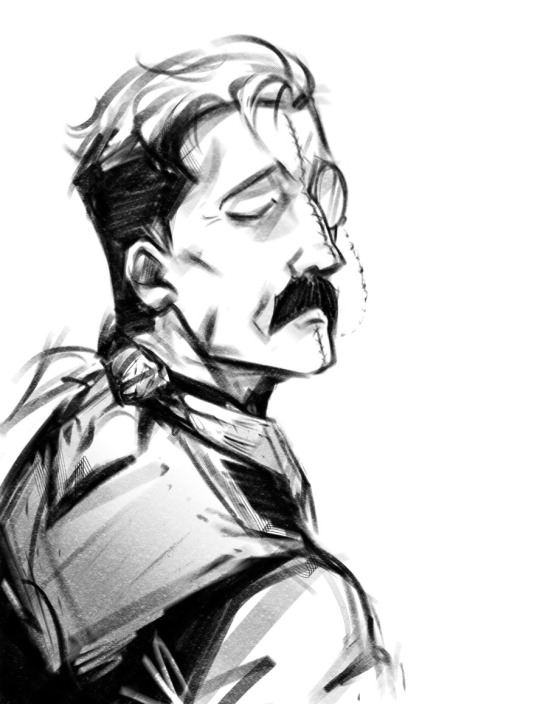
Simeon

Evil Gregory

#ace attorney#ace attorney art#shelly de killer#simeon saint#simon keyes#gregory edgeworth#except he's evil#based on a screenshot from AAi taken by Jupi#go follow her for more greg content btw#@ hexstraw on here#my art
469 notes
·
View notes
Text
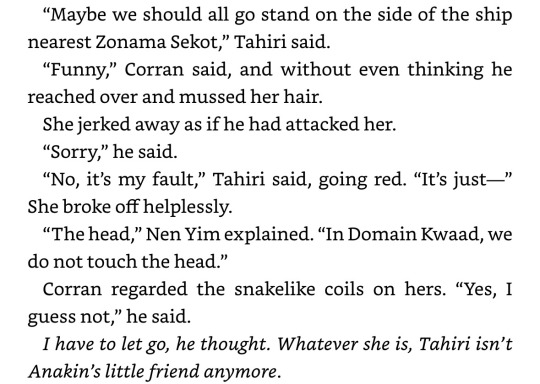
soaking up all of this brilliant riina tahiri characterization bc we get nothing like it again after this book
12 notes
·
View notes
Text

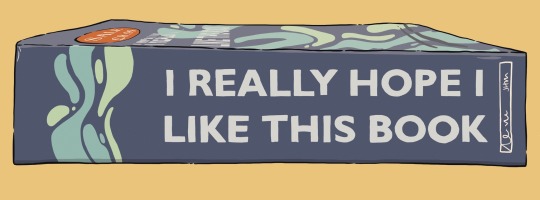
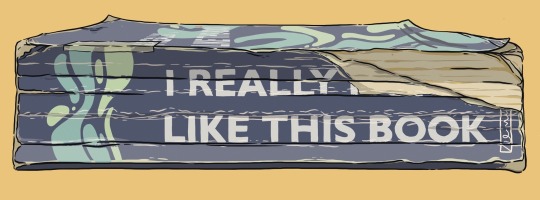
What books have you done this to?
Instagram / Shop
90K notes
·
View notes
Text

War for the Planet of the Apes: Revelations (2017) - Greg Keyes - series #3
0 notes
Text


“You said he left us, that he was a drunk who didn’t care about us.” “Because he did leave us,” her mother said. “Somebody had to be strong for you and it sure as hell wasn’t him. He gave up on me, gave up on you.” “No,” Maddie shouted. “You’re the one who gave up! You gave up on everything. You gave up on humanity.” “Madison—” “And if Dad’s such an asshole, then why’d he come back? Why is he trying to help people while we’re trying to kill them?” “We are helping people, baby—”


“Bullshit!” she said, taking a step toward her mother. “You said you were doing this for Andrew. But do you really think he would’ve wanted this?” That made an impression on her. “I… I don’t know,” she said. “Exactly. I’m starting to think you don’t know more than you do.” She ran into her room, slammed the door, and locked it. Then she ignored her mother pounding on it and calling her name until she went away.
Forever screaming abt this because this woman really convinced her daughter that "people were gonna die" but "things would be better" was an actual choice she had the authority to make on behalf of the world, and used her dead son to justify it.

If Emma Russell has no haters, then I'm dead.
#godzillaedit#filmedit#movieedit#godzilla king of the monsters#king of the monsters#godzilla#emma russell#madison russell#monsterverse#millie bobby brown#vera farmiga#greg keyes#books#quotes#[greatrunners graphics]
13 notes
·
View notes
Text
The Towers and the Thalmor
This is, unabashedly, me putting on my most exquisite tinfoil hat and theorizing what I believe to be the goal of the Thalmor in the Elder Scrolls universe.
Spoilers for all the major Elder Scrolls games, I think?
So, what do the Thalmor want? According to the loading screens in Legends, and the Infernal City by Greg Keyes, the Thalmor wish to subordinate all other peoples of Tamriel and "bring about a new Merethic era".
I find this somewhat lacking as an overarching goal. Simply taking control over Tamriel is something that the Cyrodiilic empires of Alessia, Reman and Septim have tried, and to varying extents, succeeded in before. Subjugating the other races seems a little bit on-the-nose. So what instead? What do they mean by bringing about a new Merethic era?
Well, the beginning of the Merethic era is considered the introduction of the Adamantine Tower to Mundus, and the beginning of linear time at the Convention. There, Lorkhan was punished for his treachery in creating the world, and by his execution, two more Towers were formed, or at least their essence was implanted in Mundus: the Red Tower and the White-Gold Tower, alongside their respective stones, the Heart of Lorkhan and the Chim-el Adabal, the gem at the center of the Amulet of Kings.
The Towers that formed after the Adamantine Tower was placed (or flown onto, or constructed on) on Nirn, seem to be the origins of the differences between the elves, what allowed the Bosmer and Chimer and all the other mer to distinguish themselves from the Aldmer, and later the Altmer. Condsidering Crystal-Like-Law is meant to be a copy of the Adamantine Tower, I personally theorize that the Altmer are in fact closest to what the Aldmer were like before the sinking of Aldmeris.
Thus, I think that "subjugating" the other races is less about subordinating the other elven races under the iron fist of the Thalmor and the Aldmeri Dominion, but more about forcing them to revert to a more Aldmeri state, in essence making all elves return to their pre-sinking of Aldmeris forms. The humans and beastfolk might simply be subjugated, though.
But I think it might even go further than that. I think the end goal of the Aldmeri Dominion is nothing less than the un-creation of Mundus. Notably, I don't think the goal is merely destruction, as Alduin or Satakal might aim for, but the undoing of the very creation of Mundus. In essence, undoing what Lorkhan tricked the Divines into doing.
The Altmer give us the terms "Aedra" and "Daedra", meaning "our ancestors" and "not our ancestors". I think the goal of the Aldmeri Dominion is to return the stolen strength and power of the Aedra to them, power which is used to maintain the constant that is Mundus, and which allows for linear time, and to return the elves to a state where they were indistinguishable for other et'Ada, other powerful ancestral spirits.
To do this, the collective strength of all elven nations might be required, which would explain the conquering tendencies of the Aldmeri Dominion and the Thalmor, while also giving a reason for the seeming destruction of the Towers around Tamriel.
So, how far have they gotten? And what is the final act?
Well, which Towers are operable?
Crystal-Like-Law - Seemingly inoperable, according to "Rising Threat", but might still be operable in other planes of existence.
Red Tower - Probably inoperable, considering the destruction of the Heart of Lorkhan by the Nerevarine, but might simply need a new Stone.
White-Gold - Inoperable, as the Chim-el Adabal is destroyed.
Orichalc - Unknown, thought inoperable with the sinking of Yokuda.
Snow Throat - Likely operating.
Green Sap - Perchance.
Walk-Brass - A conundrum. Thought inoperable, might simply need rebuilding and a new power source.
And the last Tower. The site of the Convention, Ada-Mantia. Likely operating, considering linear time continues on Mundus, this is, in my opinion, the final goal for the Aldmeri Dominion. To destroy or disable Ada-Mantia and break the Earth-Bones which bind the Aedra to Mundus.
My sincerest hope for the Elder Scrolls 6, aside from re-introducing spears, is that the Adamantine Tower becomes an important site for the plot, if it truly is set in the Iliac bay region.
This has been a cathartic embrace of my inner tinfoil hat-wearing lore nerd.
I'm probably wrong (for canon), but I love the Elder Scrolls, and I will head-canon this always.
27 notes
·
View notes
Text

(Excerpt from Firestorm by Greg Keyes)
I think... some of the most painful elements in Dawn are the moments that Caesar realizes that Will is almost certainly dead. Out in the forest for a decade, learning to lead, to build a village and take care of such a vast group of apes, he can live in denial. Will is akin to Schrödinger's Cat; if Caesar cannot see what is happening in the city, see evidence of his adoptive father's death, then it cannot have happened. But then he's back in his old home and it's overgrown and falling to pieces and long abandoned. Will and Caroline are not there. And then Malcolm asks who Will was, the lack of recognition further evidence that Will is not in the Colony. I can't even imagine what Caesar's feeling at that moment. Who was Will? Someone who kept his mother in a cage for experiments, someone who defended him from harm, someone who held him when he was sick or scared, someone who gave him toys and treats and played with him, someone who kept him alone away from other apes, someone who took him to his beloved trees and let him climb to his heart's content, someone who lost him and sent him to be kept in a cage with a cruel tormentor, someone who followed across the bridge through chaos and danger to beg him to come home. He was his father.
81 notes
·
View notes
Text
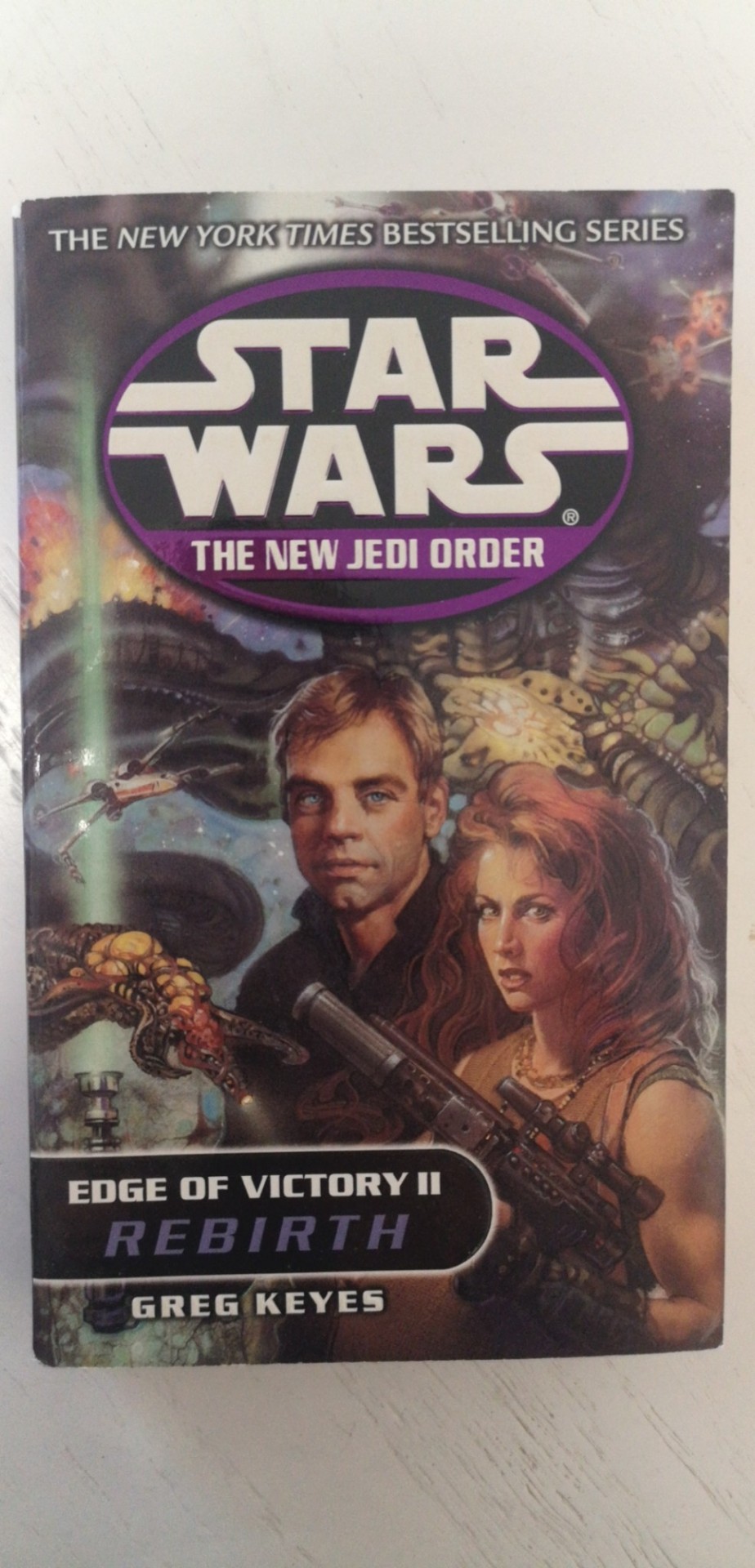
Edge of Victory II: Rebirth - Greg Keyes
Star Wars: The New Jedi Order book 7
Reread: Nov 2023
While the first Edge of Victory book was one story about Anakin on Yavin 4. This one has many plotlines. And not all of them converge at the end. It's kind of like a bunch of separate novellas all put together. All the major characters are in the book, including Anakin and Tahiri after their trauma inducing time on Yavin 4. Jaina is getting tricked into attacking a civilian Yuuzhan Vong target. Jacen is being annoying again, fighting with his father. In happier news however Mara gives birth to her and Luke's son, Ben. Not before almost dying first though.
I couldn't really remember what happened in this one. Which in a series this long is no surprise, but the best bits stick out. And no bits here stuck out. I remember liking it at least. But again it didn't stick so just one of the lag points of the series.
Info: Del Rey; 2001
#egde of victory ii: rebirth#greg keyes#edge of victory duology#star wars#the new jedi order#njo#fiction#science fiction#sci fi
0 notes
Text
I've always felt that the Fallout IP has gone weirdly untapped in terms of expanded universe material, specifically novels and comics. Basically just All Roads for Fallout, then ten years of nothing, then a runaway smash-hit tv show- so like, clearly there's some kind of appetite for stuff in the EU space, probably no shortage of talents who'd love to work on such a thing. I'm not saying that they should do this, or that it would be good if they did, I'm just curious as to why they didn't try to milk that cow, particularly now that I'm remembering that a lot of the other runaway-smash-hit game franchises that Bethesda-Fallout is contemporary with did try their hand at tie-in novels. Did those collectively flop? That would hold neat explanatory power. Maybe the Greg Keyes Elder Scrolls duology was them trying their hand in that space and recoiling. Hmm.
64 notes
·
View notes
Text

greatest book ever
#rebirth too!#greg keyes was so good it’s such a shame he didn’t contribute more#i thought a lot of my opinion on the njo was repainted by nostalgia but no it genuinely rules sometimes#key word sometimes
0 notes
Text
“They were on an island of ash and shattered stone, still surrounded by water, but this water appeared to be boiling. The steaming air stank of hard minerals, and the sky was bleak and gray.”
-Excerpt from The Infernal City, by Greg Keyes

Forgotten lore: Who was truly at fault for the crash of Baar Dau and the onset of the Red Year? Popular opinion would see Vivec responsible, as putting his desire for adulation compromised the safety of his people. Others may blame Azura and her Nerevarine prophecy for abandoning Vivec City after the collapse of the Tribunal or perhaps Sheogorath, the one who hurled it out of the sky in the first place. But, the direct catalyst for the destruction of the Dunmer’s ancestral homeland was actually a love triangle.
Let me explain: After the disappearance and presumed death of Vivec, Baar Dau didn’t immediately plunder into the city, this would occur 11 years after the events of Morrowind and 5 years after the events of Oblivion, in 4E 05. The reason? Two Dunmer men by the names Vuhon and Ezhmaar Sul.

As residents of Vivec City, Vuhon and Sul were well aware of Baar Dau’s instability and the threat it posed. To keep Baar Dau suspended in the air, the two struck a deal with Clavicus Vile. Together, through friendship and a bit of rivalry, they built the “ingenium”, a machine inside the meteor that harvested soul energy for Vile’s realm (Daedric Princes have a thing for souls) to keep it afloat. At first, they sacrificed slaves and criminals, but the ingenium demanded more energy from suitable “higher quality” souls. Among these souls, Vuhor selected a candidate, a Dunmer woman named Ilzheven. Coincidentally, Ilzheven was Sul’s wife and Vuhor’s unrequired lover.
Sul’s rushed inside the meteor to free Ilzheven and Vuhor retaliated. Amidst the struggle, the ingenium was destroyed, and everyone in the radius was killed when Baar Dau hit the earth. Regardless of who was to blame, Sul and Vuhor survived, they were hurled into Vile’s realm of oblivion. They went their separate ways; Sul was finding an escape to Tamriel and living his life as a rough while Vuhor, after a series of hatched plots, stole power from Vile and declared himself lord of Umbriel, a city within the outskirts Vile’s realm. It’s a long story from here, but about 40 years later, they would reunite for one final confrontation upon the city. Without spoiling too much of the book, here’s about how that went:
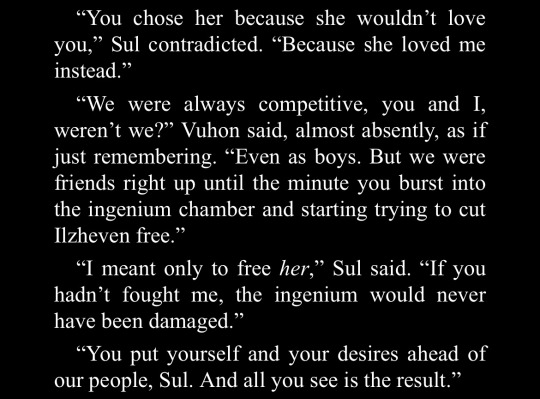
To say the destruction of Vvardenfell and the spewing of ash over Morrowind for hundreds of years was because of love is a bit misleading, but would it have happened if Vuhor had chosen any other soul besides Sul’s wife? Probably not.
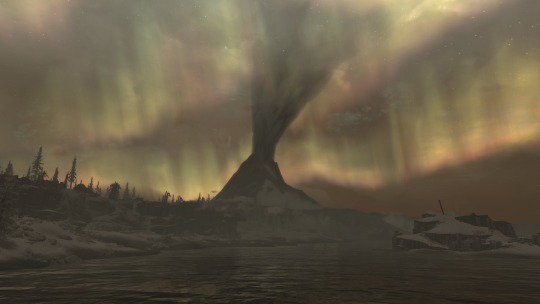
(All of the evidence and excerpts listed are from the two canon Elder Scrolls novels “The Infernal City” and “Lord of Souls” written by Greg Keyes).
26 notes
·
View notes